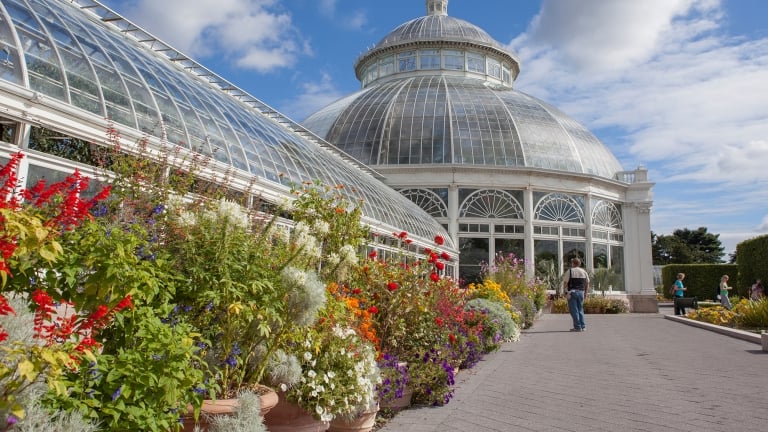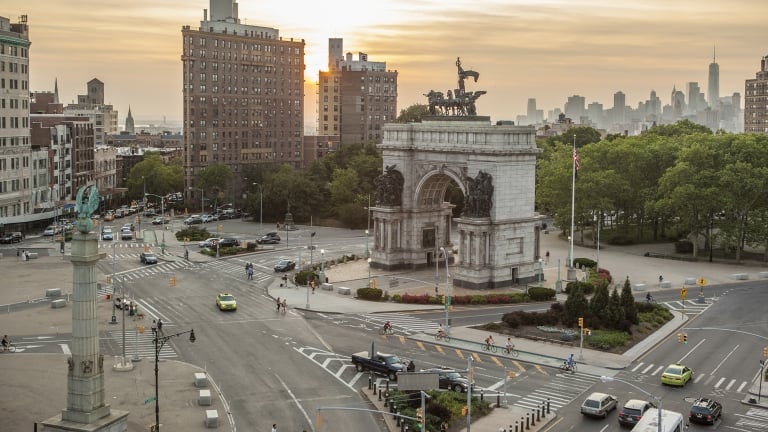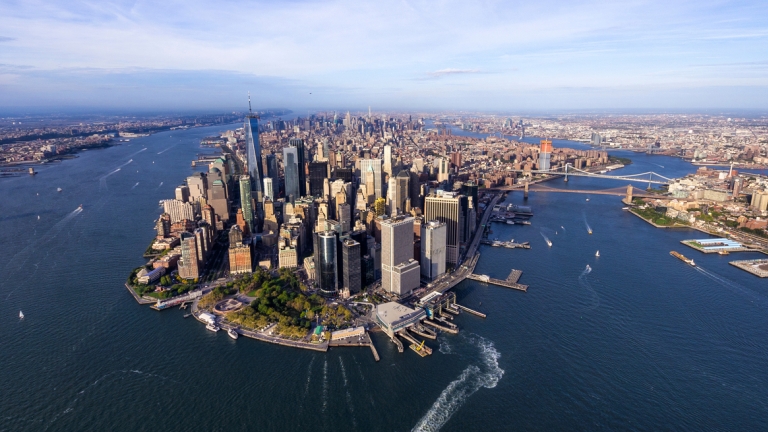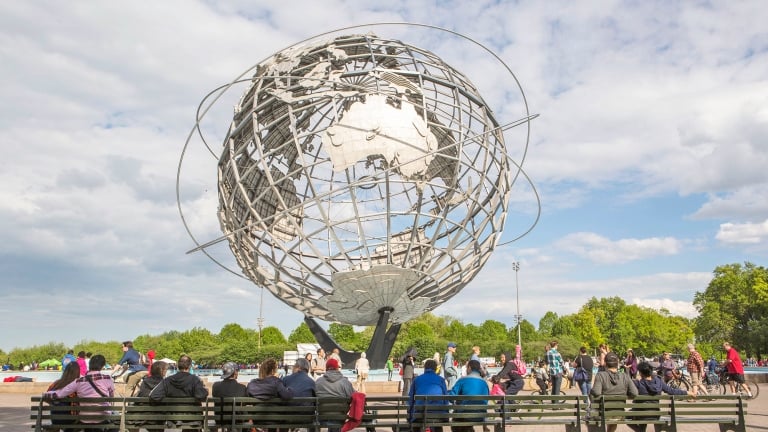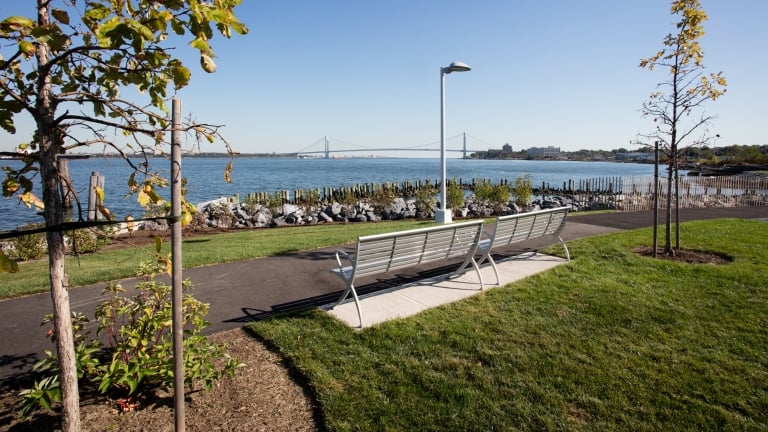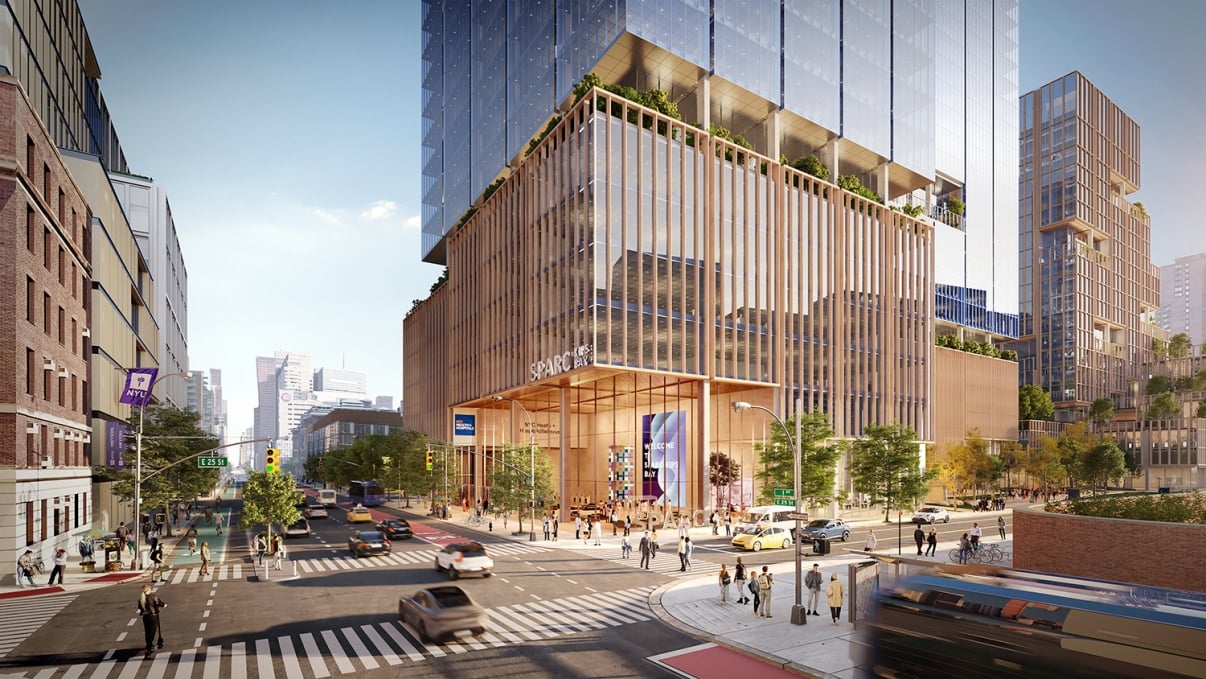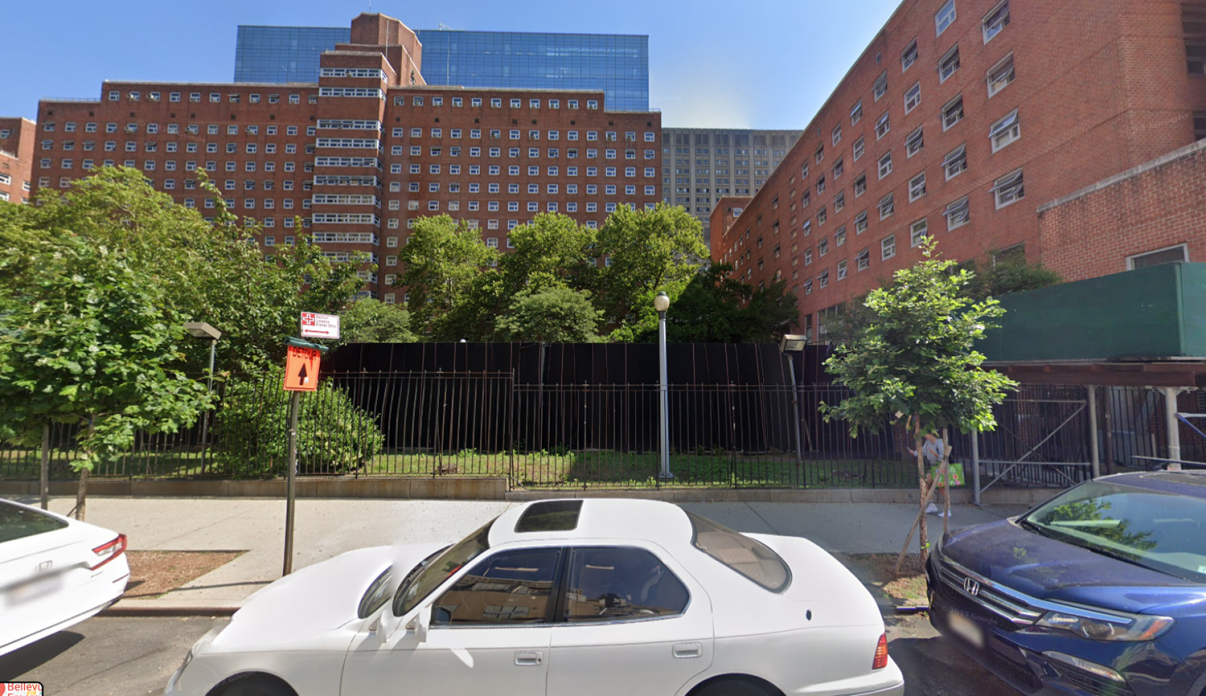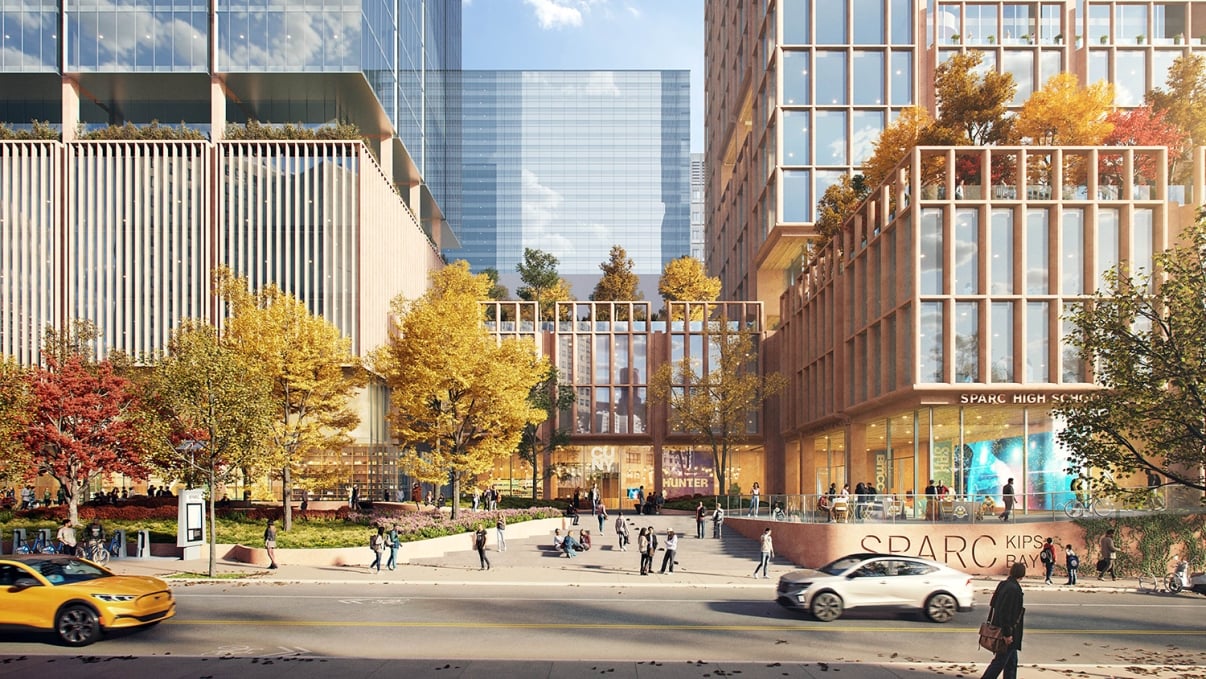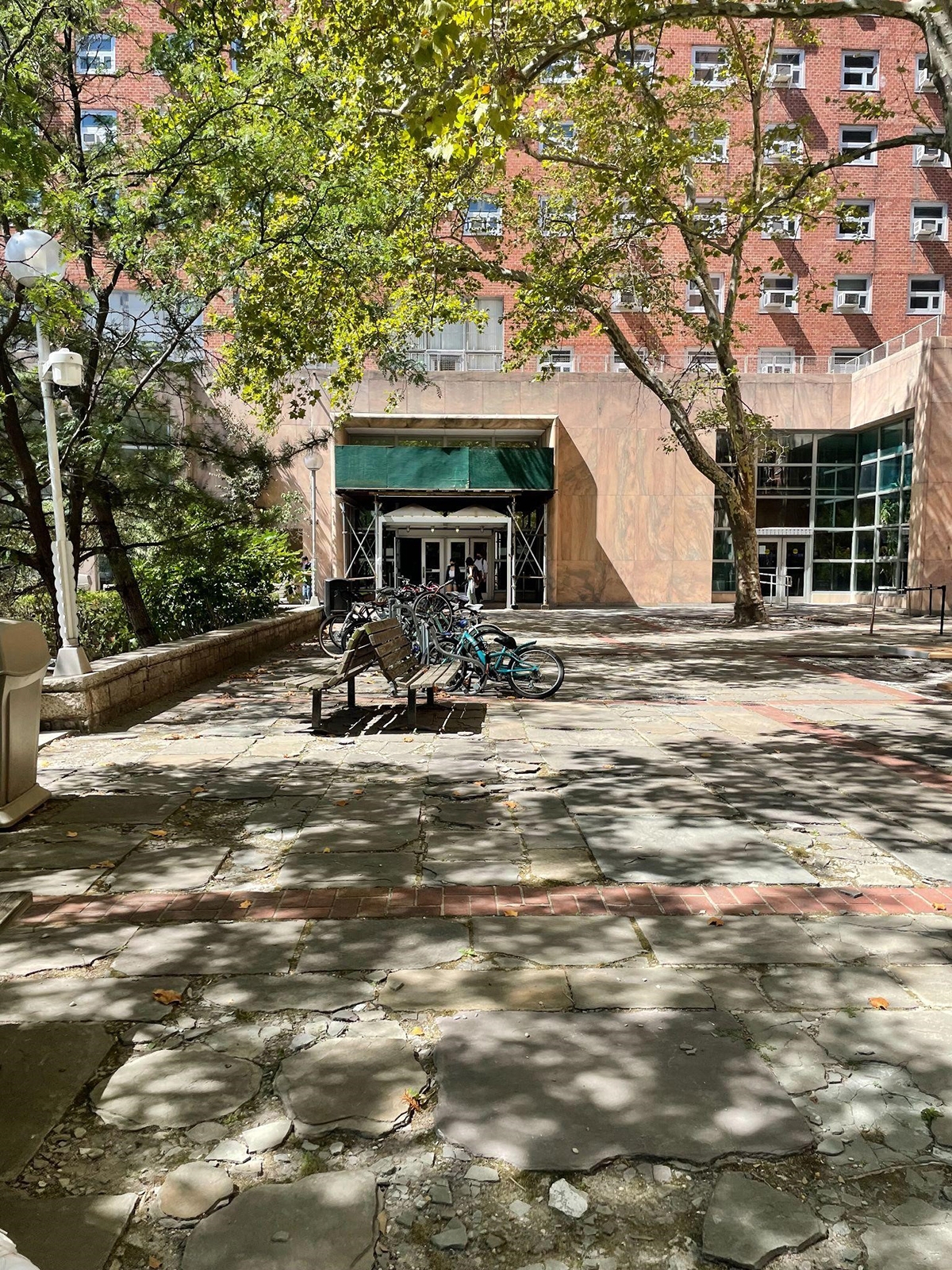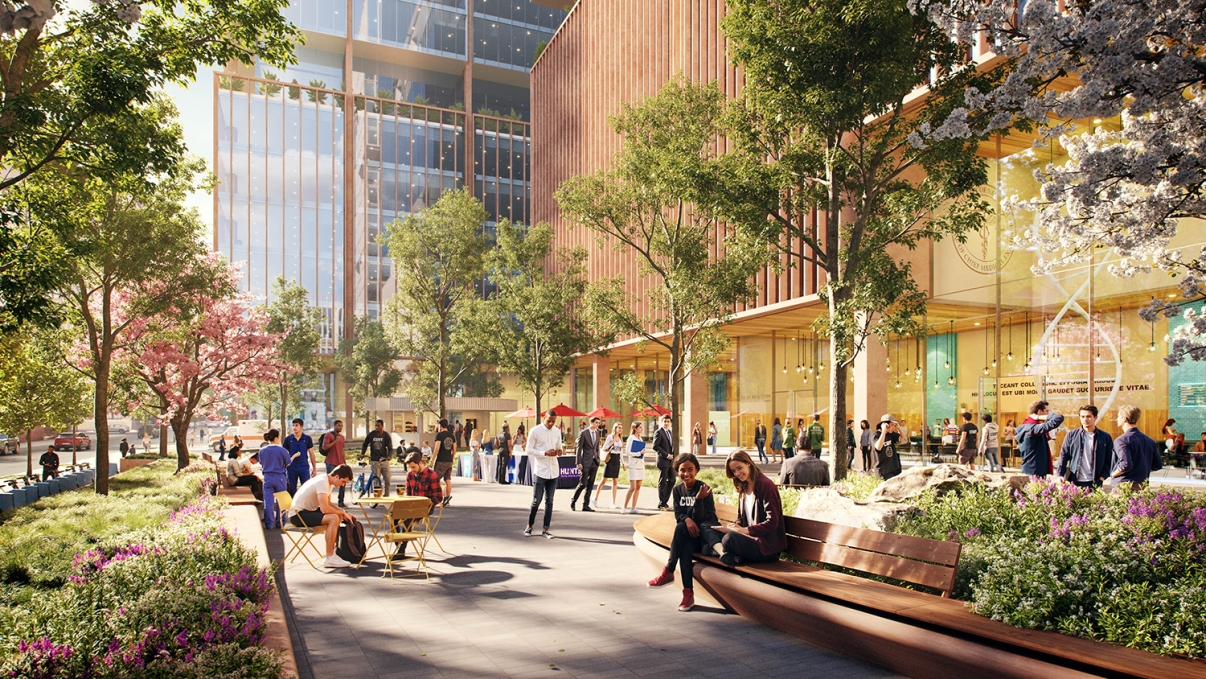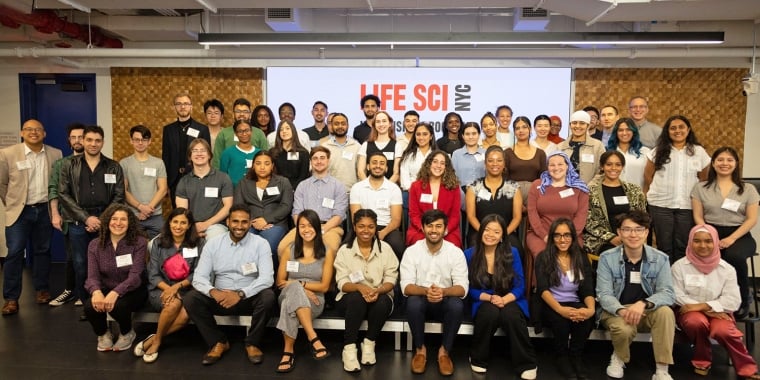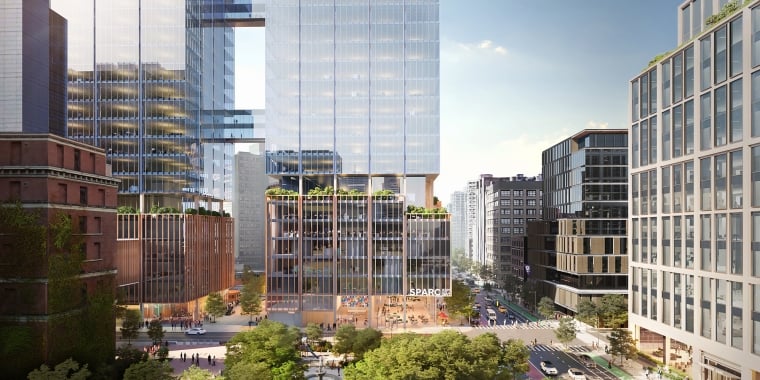
SPARC Kips Bay
The Science Park and Research Campus (SPARC) Kips Bay will be a first-of-its-kind job and education center in the heart of New York City, transforming the Hunter College Brookdale campus into a state-of-the-art life sciences, healthcare, and public health hub, and bringing public realm improvements to the broader Kips Bay neighborhood.
SPARC Kips Bay will transform Hunter College’s antiquated Brookdale Campus into nearly two million square feet of modern academic, healthcare, and life sciences space. The project will support the continued growth of the life sciences and healthcare industries in New York City through the construction of new facilities and the cultivation of the city’s talent pipeline in these industries.
The SPARC Kips Bay Master Plan represents a shared vision for the future of this site and outlines key next steps to advance the project into design and construction.
All renderings, courtesy of SOM / Miysis.
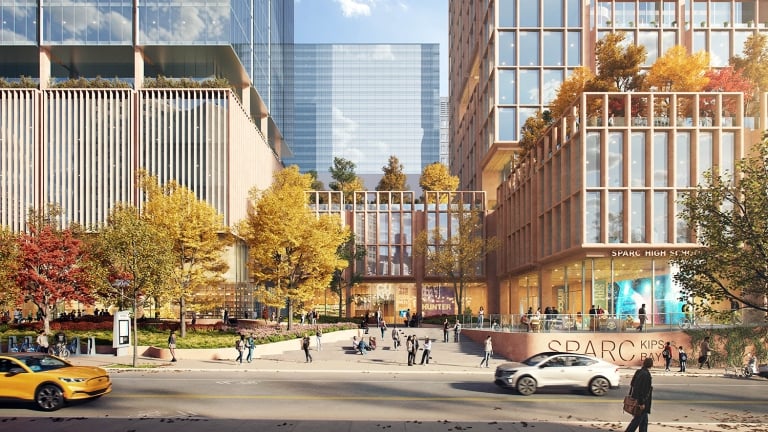
SPARC Kips Bay Master Plan
A once-in-a-generation opportunity to bring together industry and education in the heart of New York City.
Read the PlanThe campus will include classrooms and labs across three integrated City University of New York (CUNY) schools—Hunter College School of Nursing, CUNY Graduate School of Health & Health Policy, and Borough of Manhattan Community College health care programs; an NYC Public Schools health and science-focused high school; outpatient ambulatory care services and a training simulation center for NYC Health + Hospitals; a new forensic pathology center and medical examiner facility for the Office of the Chief Medical Examiner; life sciences research labs for companies of all sizes; and community and retail spaces.
Empowering the Future Workforce
In January 2025, NYCEDC—working in partnership with nearly 50 leaders in education, workforce, and industry—released a report: “Empowering Kips Bay’s Future Workforce: The Kips Bay Science District Education & Workforce Vision.” The vision puts forth recommendations to support our mission to develop the career pathways, programs, and partnerships needed to ensure Kips Bay provides equitable access for New Yorkers to the city’s healthcare, life sciences, and public health education, training, and job opportunities.
Empowering Kips Bay’s Future Workforce: The Kips Bay Science District Education & Workforce Vision

Life Sciences Investment
As New York City becomes a national leader in the life sciences industry, Kips Bay is at the center of this growth. With up to one million square feet of life sciences space planned, SPARC Kips Bay will help the city achieve the goals set out in LifeSci NYC of creating 10 million square feet of new life sciences space in New York City by 2030. The project is supported by strong City and State collaboration, with $1.6 billion in City and State funding committed to support the education, public health, and healthcare components of the project, alongside critical community infrastructure. This initial investment will leverage an additional $2 billion in private funding to help realize the project and continue growing the life sciences industry in Kips Bay.
Robust Engagement
Public engagement is an important through line of the project, starting during the creation of the master plan and extending through future design. Most recently NYCEDC, CUNY, and SPARC Kips Bay agencies hosted an open house where community members emphasized the importance of open space, an active ground floor, and collaboration between users. Learn more about what we heard.
The SPARC Community Task Force was formed to integrate priorities of local stakeholders into the project’s public realm design in the first and second phases of the SPARC Kips Bay Project. Led by local representatives, the SPARC Community Task Force is co-chaired by Councilmember Keith Powers and Manhattan Community Board 6 Chairperson Sandra McKee, who consulted on the selection of 11 community stakeholders diverse in age, lived experience, and neighborhood affiliation, and includes representation from all levels of government.
From January to June 2024, the Task Force convened six times. These meetings culminated in the production of Design Principles to help guide the design of SPARC Kips Bay. These principles can be found here.
Additionally, to support the workforce development aspects of the project, the Kips Bay Science District Education & Workforce Task Force was formed—composed of campus institutions and relevant City, industry, and workforce partners—to create and support integrated academic and career pathways for the campus population and beyond.
Following the release of the Master Plan, the project is undergoing environmental review and land use entitlements. NYCEDC will deliver phase one of the project on behalf of CUNY and the City, along with the community infrastructure—including SPARC Square, the new 25th Street pedestrian bridge, and floodwall tie-in. Construction is expected to start in late 2025 and continue through the end of 2031.
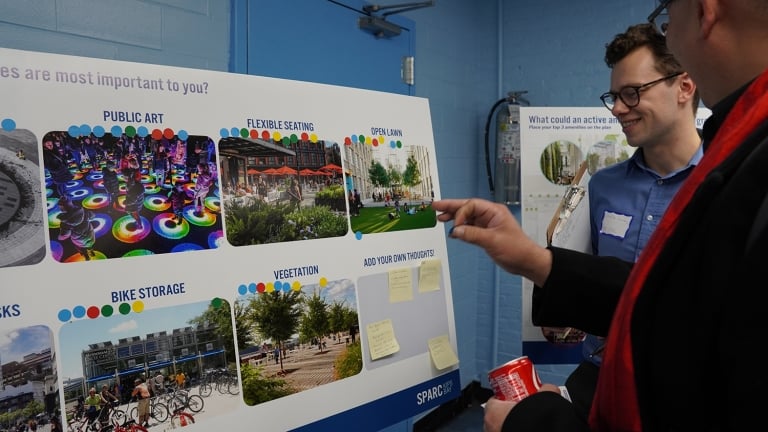
SPARC Community Engagement
Learn more about our efforts to engage members of the community, invite them to share feedback, and learn more about the historic investment coming to their neighborhood.
Learn MoreSPARC Kips Bay
Images of transformation from today to the future
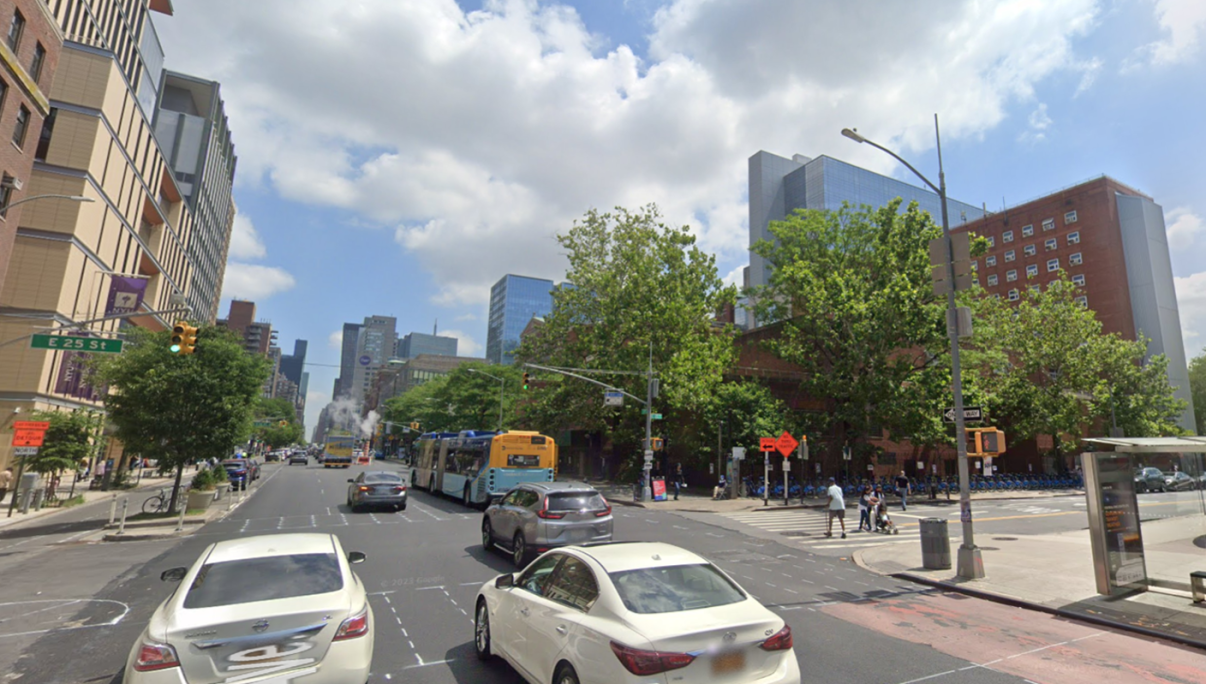
Current view of First Avenue and 25th street, facing north
If you have questions about the master plan, community engagement and workforce development approach, please reach out.
